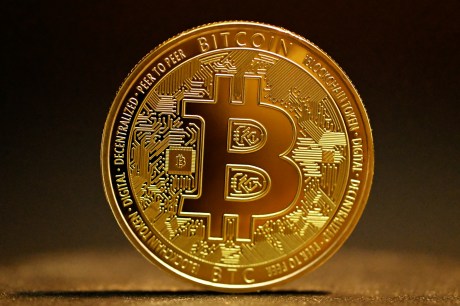As we step into 2025, the world stands at the crossroads of exponential technological change and geopolitical disruption. Innovation continues to accelerate, delivering transformative advancements across industries and society.
Yet, this rapid progress brings both opportunities and profound challenges—what futurist Dr Mark van Rijmenam calls the good, the bad, and the very ugly of technology and humanity.
The backdrop to this reckoning is a world shaped by the second Trump presidency, where nationalist policies, protectionist trade measures, and techno-geopolitical rivalries intensify global disruption. While some technologies promise to elevate humanity—ushering in new efficiencies, smarter healthcare, and greater connectivity—others erode trust, exacerbate inequality, and challenge societal norms at an unprecedented scale.
2025 will not just be a year of progress but one of reckoning, where society must confront the dual-edged nature of innovation. How we adapt, innovate, and regulate in this critical period will shape the trajectory of the coming decade.
1. AI, AI, Wherever You AreIn 2025, AI will be everywhere, transforming industries and everyday interactions. Agentic AI enables autonomous decision-making and task automation but raises accountability concerns. Companies like McKinsey and JPMorgan leverage fine-tuned large language models (LLMs), driving innovation and competition with tools like Llama, downloaded 350 million times.
Edge AI improves efficiency and privacy by processing data on local devices, while invisible AI integrates seamlessly into daily life, offering intuitive, frictionless experiences. Despite driving innovation, AI also amplifies societal issues such as job displacement and filter bubbles. To navigate this duality, leaders must focus on ethical frameworks, transparency, and inclusive governance to ensure AI serves humanity’s best interests while mitigating its risks.
Source: The Digital Speaker
2. Trust and Truth Be GoneIn 2025, trust and truth face unprecedented challenges as generative AI, deepfakes, and misinformation erode our ability to discern reality from fabrication. Cybercrime, projected to cost $10 trillion globally, will undermine institutions, media, and personal relationships. Hyper-realistic deepfakes—ranging from fake videos of leaders to government-created digital personas—will sow confusion and disrupt businesses, governments, and families alike.
Resilience becomes crucial in combating these threats. Families and organizations will rely on practical strategies, such as code words to verify identities, fostering environments where employees feel empowered to question suspicious activity. Media literacy education and advanced detection tools will play vital roles in exposing fake content and preserving authenticity.
Social media platforms, such as X may exacerbate the problem by amplifying misinformation and reinforcing divisive echo chambers. In the absence of comprehensive regulations governing AI and synthetic media, bad actors will exploit these technologies, further undermining trust.
The challenge ahead lies in rebuilding trust in a world where even tangible truths can be digitally distorted. Addressing this requires collective action, ethical frameworks, and a commitment to transparency to protect the integrity of information and restore confidence in what we see, hear, and believe.
3. A Tsunami of InformationIn 2025, the volume of data and content will soar to unprecedented levels, driven by AI’s relentless creation of synthetic information. Generative AI already produces 57% of web-based text, with projections that 90% of online content will be synthetic by 2026. This deluge overwhelms attention spans, erodes trust, and complicates decision-making across society.
The challenge is filtering relevance and credibility amid this information overload. AI risks creating a self-reinforcing loop by relying on synthetic outputs, potentially undermining its own effectiveness. Individuals face data fatigue from constant notifications, while businesses struggle with decision fatigue. CFOs are particularly affected, with 79% identifying data management as their greatest challenge.
Adding to the complexity, the spatial internet and metaverse introduce immersive 3D content, making the evaluation of information even more challenging. As the information tsunami grows, tools for curation, personalization, and summarization become essential. Platforms like Futurwise aim to transform chaos into clarity, helping individuals and organizations navigate this overwhelming landscape.
The question remains: can we effectively harness tools to distill clarity from the flood of information, or will we be swept away by its relentless tide? The answer will shape how society adapts to an era of synthetic content and perpetual updates.
Source: The Digital Speaker
4. Tokenize the Asset, RWAs All the Way
In 2025, tokenization of real-world assets (RWAs) will revolutionize finance by integrating tangible assets like commercial real estate, fine art, vehicles, and carbon credits into the digital economy. Blockchain technology enables fractional ownership, unlocking liquidity, democratizing wealth building, and drawing institutional giants like BlackRock into this transformative space, with RWAs projected to unlock trillions in value.
Dynamic NFTs (dNFTs) will redefine asset representation by updating in real time to reflect changes in usage or conditions, bridging static ownership with evolving realities. Regulatory clarity from regions like Singapore and the EU has provided a framework for innovation while protecting investors, and platforms like Fermion and Securitize are leading the charge with compliance-friendly ecosystems.
However, risks persist. Centralized platforms could undermine decentralization, underregulated markets may invite fraud, and over-financialization could lead to speculative bubbles akin to the 2008 crisis. Success in tokenization will depend on secure platforms, early adoption by innovative players, and adaptive regulatory frameworks.
As RWAs reshape global finance, the focus must remain on responsible adoption to ensure a transparent and inclusive financial future while mitigating potential pitfalls.
5. The Big Crunch is NearIn 2025, “The Big Crunch” underscores the looming threat quantum computing poses to traditional encryption systems like RSA and ECC, potentially endangering global security across banking, government, and communication sectors. By year’s end, a major player—be it a government or Big Tech—may crack a critical encryption algorithm, though secrecy will likely delay public acknowledgment for strategic cyber warfare advantages.
Efforts to mitigate this risk include NIST’s quantum-safe standards and early adoption in sectors like banking and defense, driven by startups like PQShield and tech giants like Google. However, transitioning to quantum-resistant cryptography (PQC) is resource-intensive, requiring significant investment and expertise. Small and medium-sized enterprises (SMEs) face steep barriers, while uneven global readiness—especially between the U.S., EU, Australia, and China—risks deepening geopolitical divides.
Despite the threats, quantum computing promises transformative benefits in AI, climate modeling, and healthcare. However, the strategic secrecy surrounding quantum decryption and the uneven pace of preparedness amplify risks. As quantum computing nears its “ChatGPT moment” in 2025, urgent action is needed to secure digital trust and economic systems, lest the Big Crunch unravel them.
Source: The Digital Speaker
6. Augment Your VisionIn 2025, augmented reality (AR) will revolutionize how we interact with the world, blending digital and physical realities seamlessly. Companies like Meta, Snap, and Vuzix are driving rapid advancements, focusing on developing mass-market AR glasses with lightweight, comfortable designs, enhanced by AI, 5G connectivity, and vision correction. These innovations will enable immersive experiences across industries such as healthcare, education, and retail, with enterprise applications and diverse pricing expected to boost adoption.
AR will also enhance spatial intelligence, providing users with contextual information about their environments and systems. However, privacy concerns, including risks like real-time doxxing and data surveillance, raise ethical challenges. Over-reliance on AR could diminish critical thinking, and monopolized platforms may restrict user autonomy.
For businesses, AR offers opportunities to enhance productivity and customer engagement, while governments must implement regulations to protect privacy and ensure equitable access. The future of AR in 2025 hinges on balancing its transformative potential with ethical oversight, shaping its role as either a tool for innovation or a source of division.
7. Humanoids to the WorkforceIn 2025, humanoid robots will transition from prototypes to integral workforce tools, revolutionizing industries like healthcare, logistics, and hospitality. Robots are already transforming restaurants by cooking and serving food, while aged care facilities are exploring humanoid solutions to combat labor shortages and address the needs of aging populations. By year’s end, many aged care facilities are expected to be predominantly staffed by humanoid robots.
These robots will become faster, cheaper, and smarter, taking on repetitive tasks and filling workforce gaps. Innovations from leaders like China and the USA, such as Deep Robotics’ Lynx and Figure, will drive this shift. While human-like designs dominate, 2025 will introduce specialized humanoids optimized for unique tasks, featuring forms like extra limbs or non-human locomotion.
Advances in AI will improve robot adaptability, enabling collaboration with humans and effective operation in complex environments. Collaborative robots (cobots) are increasingly common, and declining production costs, particularly in China, will pave the way for mass adoption. Humanoids are set to reshape workflows across sectors, addressing critical challenges with innovation.
Source: The Digital Speaker
8. From Reactive to Proactive HealthIn 2025, healthcare will continue its transition from reactive treatment to a proactive model aimed at predicting, preventing, and optimizing health outcomes. Wearable devices like smartwatches and the Oura Ring already empower individuals with real-time insights, detecting conditions like sleep apnea and encouraging healthier habits. IoT-enabled monitoring systems and AI-driven analysis of medical records and genetic profiles further support early interventions, reducing reliance on crisis management.
Innovations like Neko body scans, Grok’s image analysis, and Mayo Clinic’s individualized medicine highlight the growing potential for tailored healthcare, enabling individuals to make informed decisions and prevent crises. Insurance models are adapting by rewarding preventive behaviors with dynamic premiums, fostering early interventions but also raising concerns about accessibility and equity.
While proactive healthcare can reduce system strain and improve outcomes, cost and infrastructure disparities risk deepening healthcare divides. As AI and wearable technologies integrate further in 2025, their impact will hinge on addressing these challenges, determining whether they bridge gaps or exacerbate inequalities in healthcare access.
9. Trumpian Doctrine Changing TechIn 2025, Trump’s presidency will significantly impact technology through protectionist policies, fragmented globalization, and deregulation. Companies like Tesla and X stand to gain from favorable policies, while Apple’s China-reliant supply chains may face disruption due to tariffs.
Proposals to repeal Biden’s AI Executive Order and eliminate Section 230 protections signal turbulence for Big Tech. Deregulation will fuel rapid growth in crypto markets, bolstered by Bitcoin innovation and accumulation, while accelerating U.S. AI leadership over China. However, this growth comes with increased risks to ethics, trust, and safety.
Militarization of technology will deepen, with companies like SpaceX and Anduril advancing defense-focused AI tools and autonomous weapons, embedding Silicon Valley further into geopolitics and defense strategies.
As Big Tech navigates this landscape of favoritism, geopolitical shifts, and militarization, its ability to balance innovation with accountability and ethical considerations will shape the technological and societal trajectory of 2025.
10. Innovate, Imitate, RegulateIn 2025, navigating exponential technological change requires balancing innovation, imitation, and regulation to shape industries, societies, and global power dynamics. The phrase “The USA innovates, China imitates, and the EU regulates” reflects how different nations approach this challenge, driving geopolitical shifts.
Innovation spurs advancements in AI, quantum computing, and spatial intelligence but risks ethical issues, resource exploitation, and societal disruption if not guided by foresight. Under Trump’s presidency, the U.S. may prioritize rapid innovation over ethical considerations, leveraging first-mover advantages but risking long-term accountability. Imitation accelerates technological adoption but exacerbates copyright disputes, especially in AI, which could stifle originality and slow progress.
Regulation remains critical but uneven. Over-regulation in the EU curtails creativity, while under-regulation in the U.S. risks exploitation. Meanwhile, China’s adaptive model positions it as a potential leader in technological advancement. Global cooperation is necessary to tackle challenges like AI ethics, misinformation, and quantum supremacy.
To ensure progress over imbalance, businesses must innovate responsibly, governments must regulate flexibly, and individuals must hold stakeholders accountable. The harmony of these strategies will determine whether 2025 becomes a year of opportunity or disruption
Conclusion: The Year of ReckoningAs we stride into 2025, the so-called Year of Reckoning, ten seismic trends chart a world reshaped by disruption. The omnipresence of AI, a growing crisis of trust, and an overwhelming flood of synthetic information challenge our perceptions of truth and redefine our relationship with technology. Meanwhile, blockchain and Real World Assets (RWAs) usher in novel financial frontiers, and quantum computing emerges as both a formidable risk and an unprecedented opportunity.
Augmented reality and humanoid robots blur the boundaries between the physical and digital realms, while advances in proactive healthcare reimagine the very essence of well-being. On the geopolitical stage, the fallout from Trumpian policies fragments globalization, hastens militarization, and destabilizes Big Tech’s dominance. Amid this turbulence, societies grapple with the triad of innovation, imitation, and regulation, striving to adapt to an accelerating technological trajectory.
The decisions we make now will ripple through generations, defining whether exponential technologies become tools of empowerment or engines of disparity. Let’s seize this moment not with trepidation but with purpose. Let the reckoning of 2025 inspire a vision of possibility—a future that is innovative, equitable, and sustainable for all.
To download the full version of Dr Mark van Rijmenam’s Technology Trends report, go here.
















